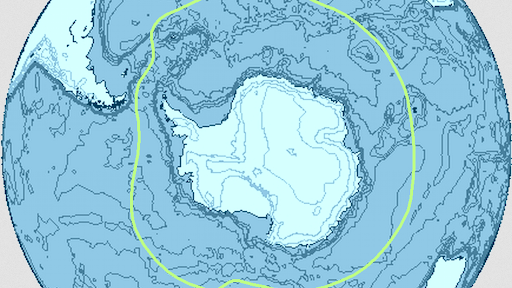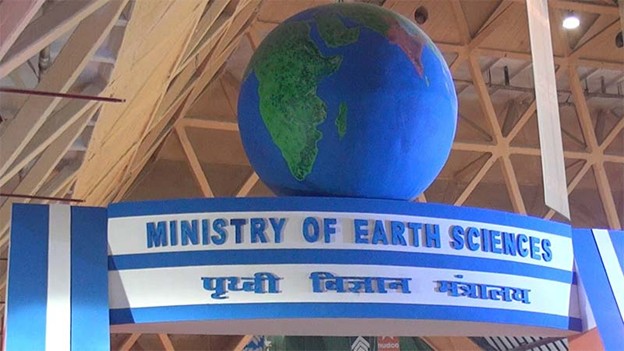




Source: RESONANCE GLOBAL
Disclaimer: Copyright infringement not intended.
Context
Following adoption of Marine Biological Diversity of Areas beyond National Jurisdiction (BBNJ) Treaty in 2023 countries are now working at PrepCom meetings to finalize operational rules ahead of first Conference of Parties (COP1) expected by 2026.
|
Aspect |
Details |
|
Name |
Biodiversity Beyond National Jurisdiction (BBNJ) Agreement; also called High Seas Treaty or Paris Agreement for Ocean. |
|
Adopted Under |
United Nations Convention on Law of Sea (UNCLOS) |
|
Nature |
First-ever legally binding treaty to protect marine biodiversity in areas beyond national jurisdiction (ABNJ). |
|
Primary Objective |
Protection, sustainable use & equitable benefit-sharing of marine biological diversity in high seas. |
|
Coverage |
High seas Areas beyond 200 nautical miles (370 km) from national coastlines; covers 60% of ocean surface. |
|
Key Features |
1. Establishment of Marine Protected Areas (MPAs). |
|
Ratification Requirement |
Will enter into force 120 days after 60 countries formally ratify. (As of April 2025, 21 countries have ratified.) |
|
Number of Articles |
75 Articles |
|
Major Targets |
Protect 30% of world seas by 2030 (30x30 target, agreed at UN Biodiversity Conference 2022). |
|
Governance Mechanism |
Scientific & Technical Body |
|
Principles Followed |
Precautionary principle, Ecosystem-based approach, Use of best available science & traditional knowledge |
|
Monitoring & Surveillance |
Enhanced surveillance mechanisms for high seas areas, support to developing countries for compliance. |
|
Importance for SDGs |
Direct contribution to SDG 14: Life Below Water & indirect contribution to SDGs on Climate Action, Global Partnerships etc. |
|
Challenges |
Ratification hurdles |
|
Examples of Covered Activities |
Deep-sea mining, marine biotechnology, commercial fishing, carbon sequestration projects |
|
Aspect |
Details |
|
Adopted |
1982 (Montego Bay, Jamaica) |
|
Entered Into Force |
1994 |
|
Key Objective |
Comprehensive legal framework governing all activities in oceans & seas. |
|
Major Provisions |
Territorial Sea (up to 12 nautical miles) |
|
Institutions Created |
International Tribunal for Law of Sea (ITLOS) |
|
Importance for BBNJ |
Forms legal backbone for defining "Areas Beyond National Jurisdiction" (ABNJ); BBNJ is a supplement to UNCLOS focusing on biodiversity conservation. |
|
Principles |
Freedom of high seas |
|
India’s Status |
Ratified UNCLOS in 1995 |
|
Aspect |
Details |
|
Main Legal Instruments |
Territorial Waters, Continental Shelf, Exclusive Economic Zone & Other Maritime Zones Act, 1976 |
|
Maritime Governance Bodies |
Indian Coast Guard |
|
Conservation Initiatives |
Establishment of Marine Protected Areas (MPAs) like Gulf of Mannar Biosphere Reserve, Sundarbans National Park, etc. |
|
Major Programmes |
Integrated Coastal Zone Management (ICZM) |
|
Biodiversity Protection |
Biological Diversity Act, 2002 (focuses on access to biological resources & fair benefit-sharing) |
|
Marine Genetic Resources (MGR) |
Research by institutions like CSIR-National Institute of Oceanography (NIO), Centre for Marine Living Resources & Ecology (CMLRE) |
|
India's Role in Global Treaties |
Member of UNCLOS, BBNJ negotiations |
Goals of BBNJ Treaty
|
Goal |
Details |
|
Expand Marine Protected Areas (MPAs) |
Current protection is only 1.44% of high seas. |
|
Fair Distribution of Marine Genetic Resources (MGRs) |
MGRs include genetic material from marine life with potential applications in medicine, industry & agriculture. |
|
Develop Environmental Impact Assessment (EIA) Guidelines |
EIAs ensure activities like deep-sea mining, fishing & exploration are conducted sustainably. |
|
Challenge |
Details |
|
Ratification Delays |
Treaty requires 60 countries to ratify. |
|
Operationalization Issues |
Even after ratification implementing treaty demands clarity on decision-making processes, scientific advisory body formation & funding mechanisms. |
|
Low Existing Marine Protection |
Current high-seas conservation is extremely low. |
|
Scientific & Resource Gaps for EIAs |
Effective EIAs require extensive scientific research. |
|
Aspect |
Details |
|
Ratification Status |
India has not yet ratified treaty (as of 2025). |
|
Advocacy |
Advocated for BBNJ Treaty implementation during G20 2023 Summit. |
|
Strategic Importance |
With a 7,500 km coastline & growing maritime economy Indian participation is crucial for regional & global support. |
|
Potential Impact of India's Signing |
Would signal strong regional leadership. |
|
India’s Strengths |
Strong marine science research infrastructure (e.g. NIO, NIOT, INCOIS). |
For more such articles, please refer to IAS GYAN
Sources:
|
PRACTICE QUESTION Q. Biodiversity Beyond National Jurisdiction (BBNJ) Treaty represents a significant step toward conservation & sustainable use of marine resources in international waters. Critically analyze objectives, challenges & implications of treaty with a special focus on India's maritime interests. |





© 2026 iasgyan. All right reserved